In the fast-paced world of online business, ensuring efficient communication with customers is paramount to success.
You’ve probably heard of the two popular options that cater to this need—
Tidio’s Lyro and Zowie AI.
These innovative platforms offer a range of features designed to streamline customer interactions and drive business growth. But how do they compare and which one is the better option for your brand?
We conducted an experiment where we put both tools to the test. Let’s see how they both performed.
The goal of this article is to compare Lyro vs Zowie AI based on a number of factors and scenarios. We wanted to check how the chatbots are processing human-like conversations including follow-ups and multiple questions in one sentence. Both systems received 10 questions that are common for ecoomerce stores.
Discover how Lyro can help your business grow
Here are the questions we presented Lyro AI and Zowie software with for each category:
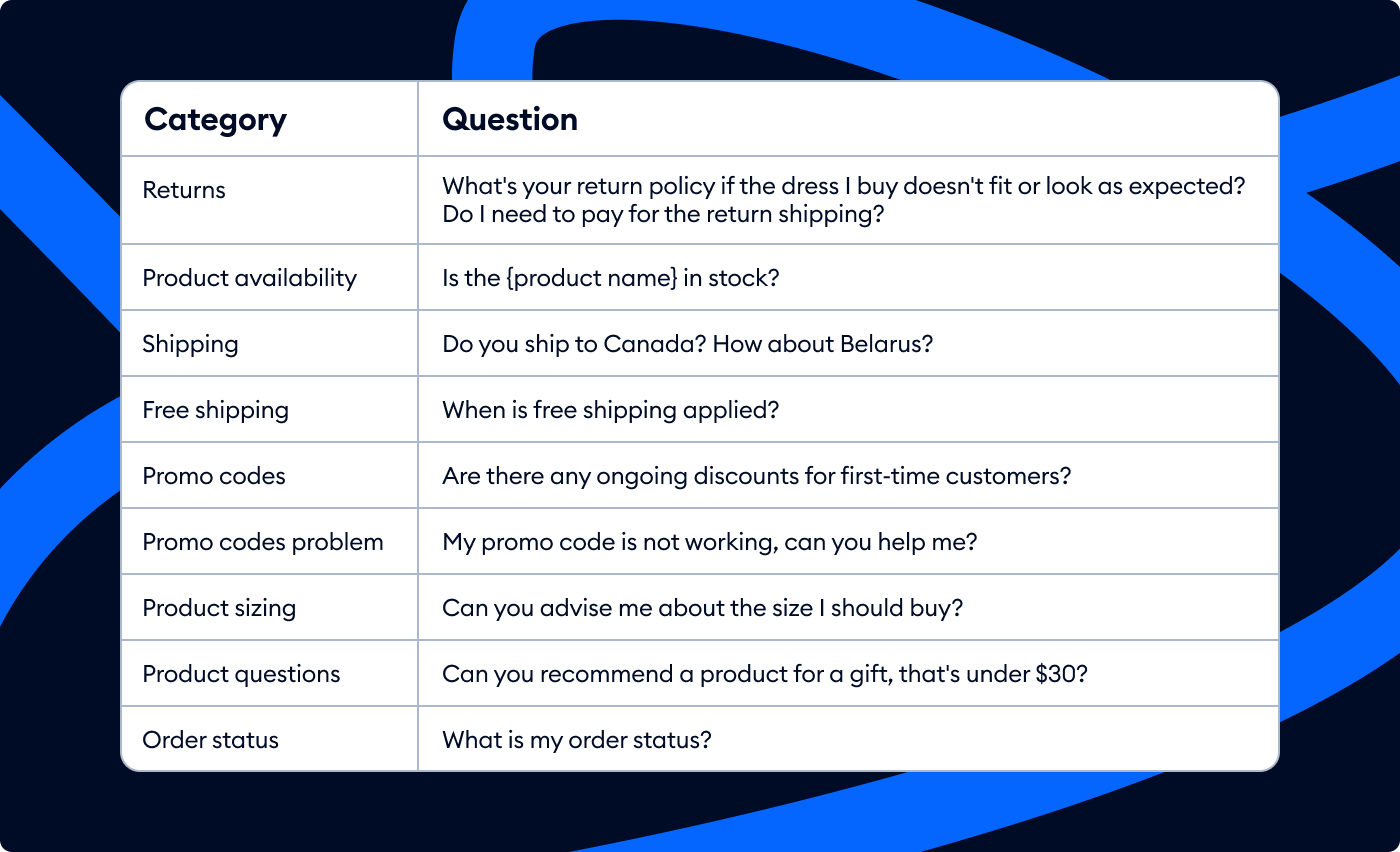
So—
Let’s get straight into the comparison.
The test was run on publicly available data and an ecommerce store True Classic. We used the data from the shop’s help center and we uploaded them to Lyro. Zowie chatbot is installed on that store.
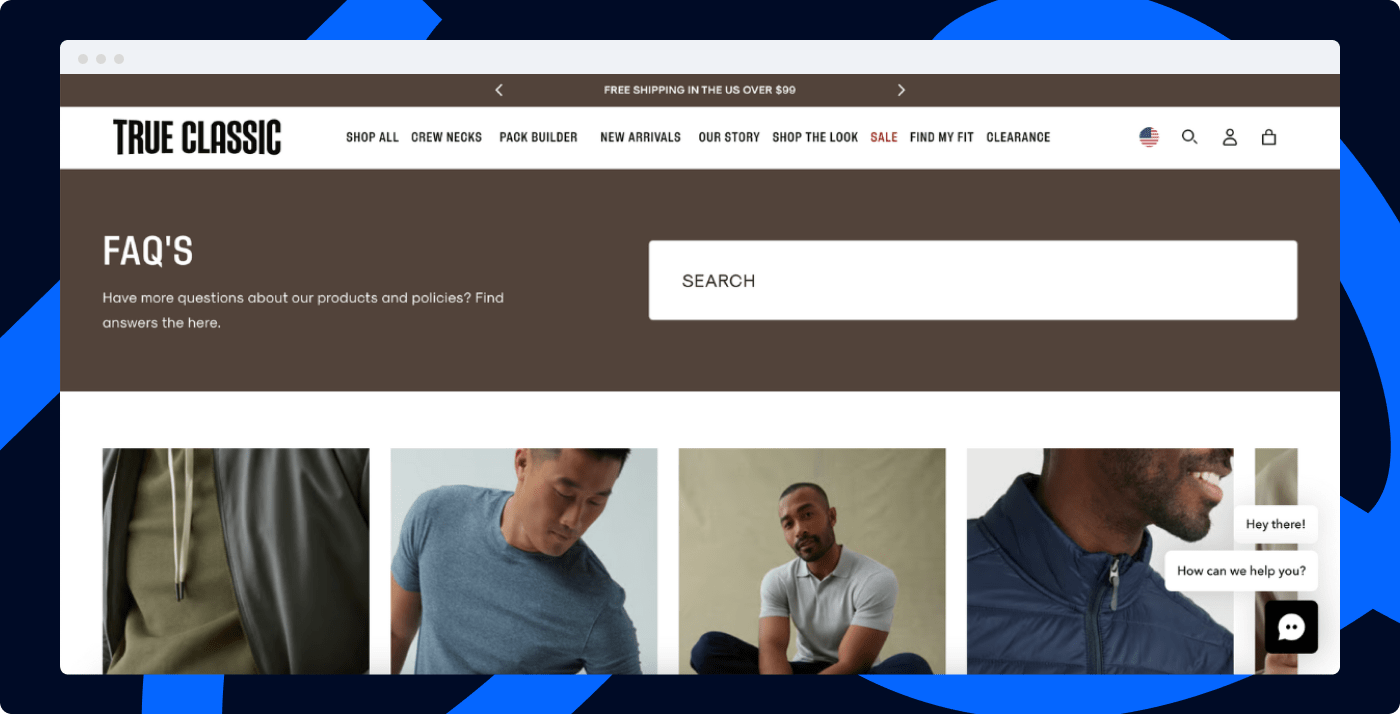
Topic #1: Returns
We asked both AI systems the questions What’s your return policy if the dress I buy doesn’t fit or look as expected? Do I need to pay for the return shipping?
Here’s how they responded:
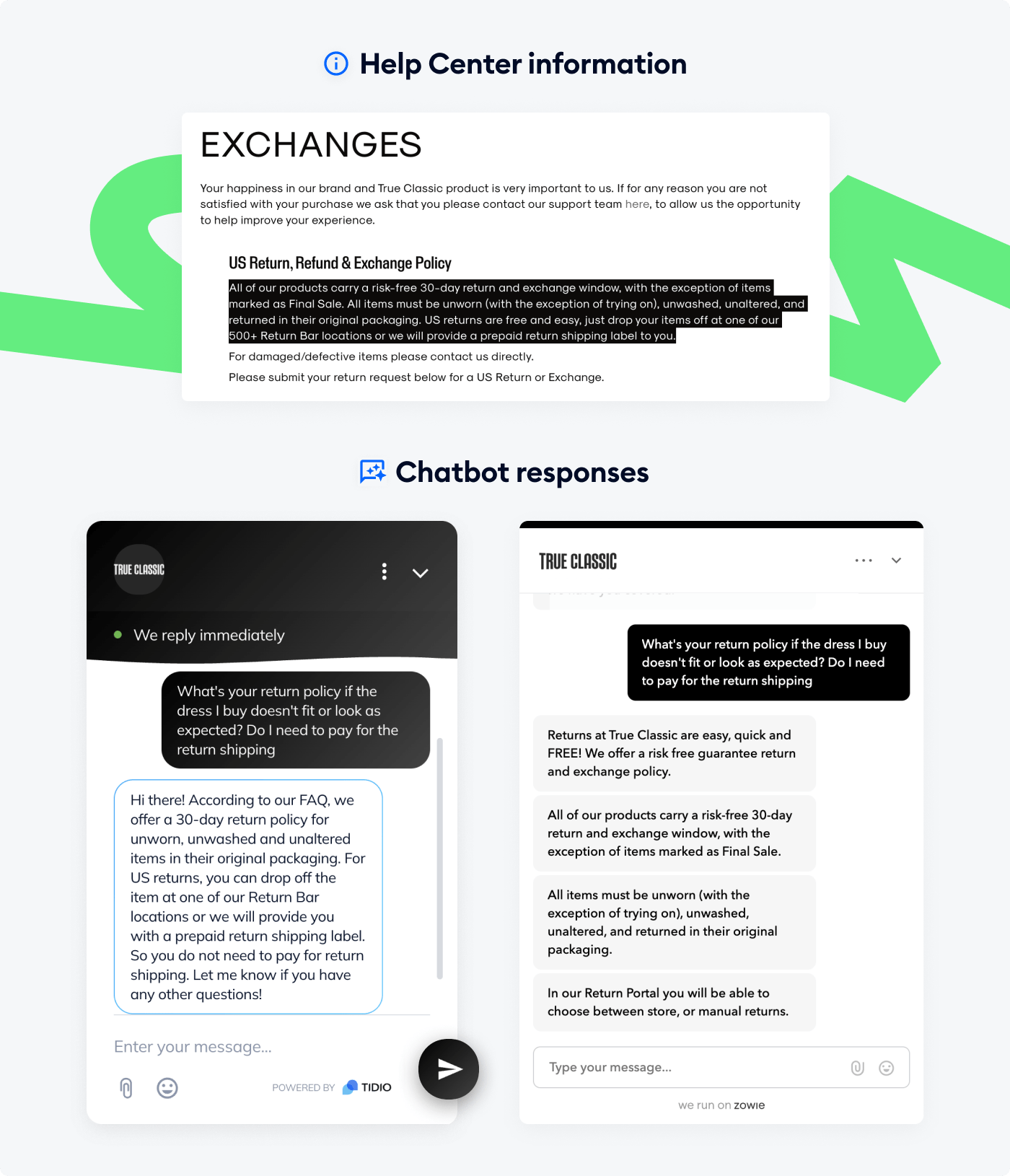
Results
Lyro ★★★★★
Zowie ★★★★★
Lyro as well as Zowie AI responses were satisfactory, presenting all the necessary information in a concise and understandable manner.
Read more: Discover the results Tidio’s customer experience team achieved using Lyro.
Topic #2: Product availability
The next question that Tidio’s Lyro and Zowie AI received was Is the MVP polo 6 pack in stock?
Here’s how they responded:
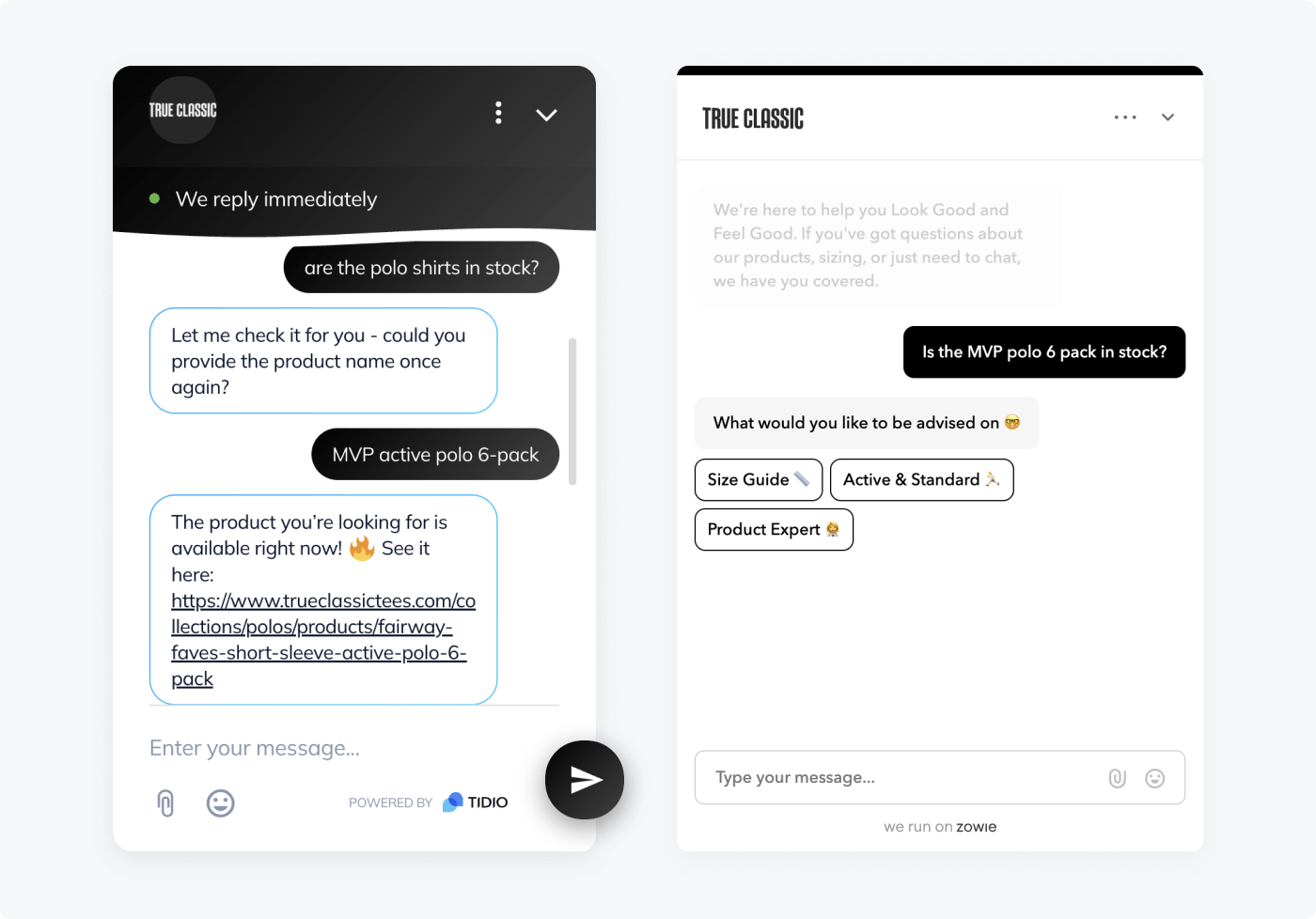
Results
Lyro ★★★★☆
Zowie ★☆☆☆☆
Lyro was able to provide the answer but didn’t understand the product name right away. The software then asked for clarification and once it received the full name, Lyro was able to answer the question accurately and fully.
Zowie doesn’t cover this topic therefore rule-based chatbot took over from AI.
Read more: Discover what retail chatbots are with use cases, examples, and tips.
Topic #3: Shipping
We asked the AI tools Do you ship to Canada? How about Belarus? and then we followed up with a question How about Marshall Islands?
Here;s how they responded:
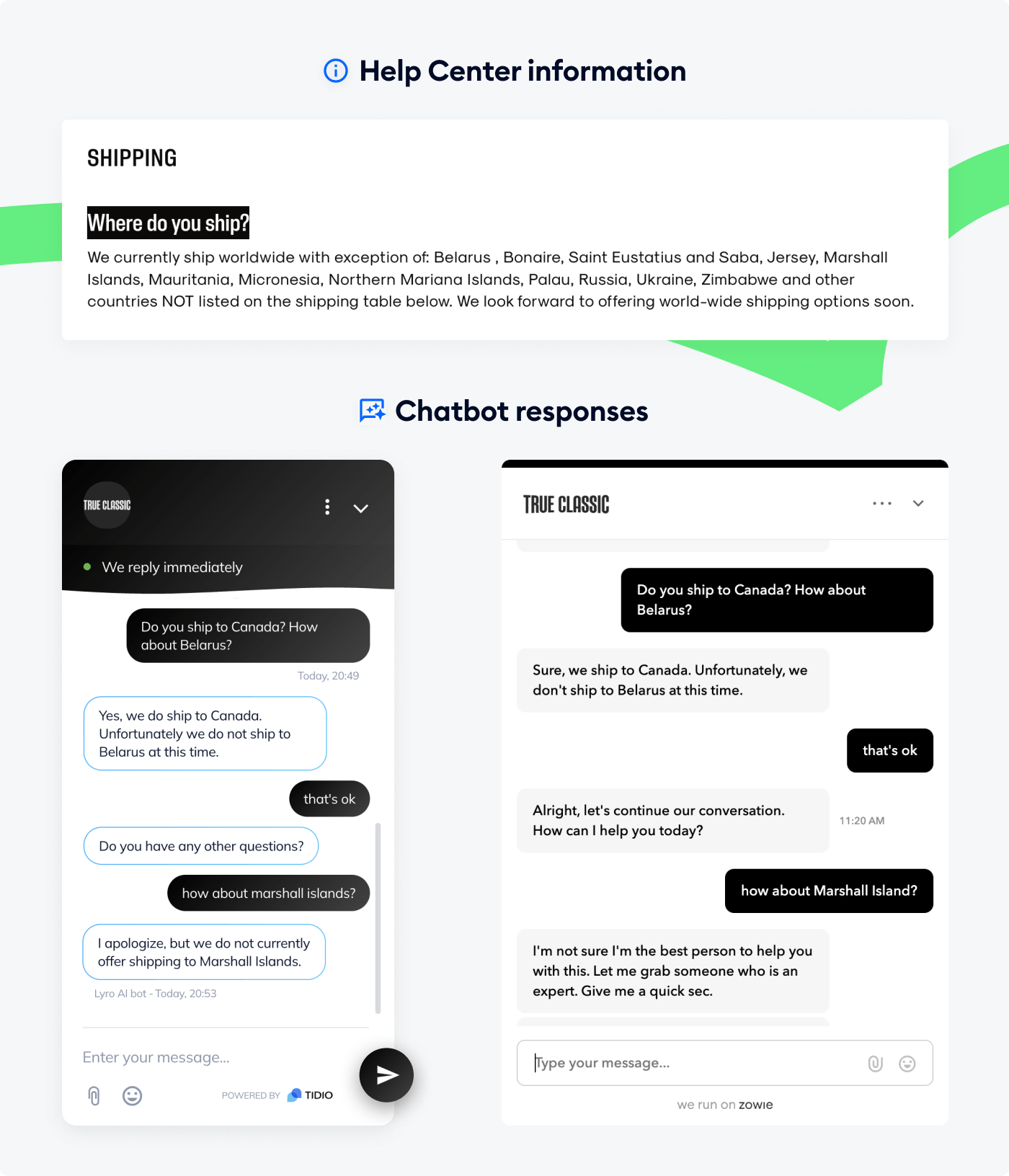
Results
Lyro ★★★★★
Zowie ★★★☆☆
On the first question, Do you ship to Canada? How about Belarus? both chatbots handled it very well. But it looks like Lyro is much better at keeping the context and understands the follow-up question How about Marshall Islands?
Topic #4: Free shipping
Lyro and Zowie chatbot got a question When free shipping is applied?
Here’s how they handled it:
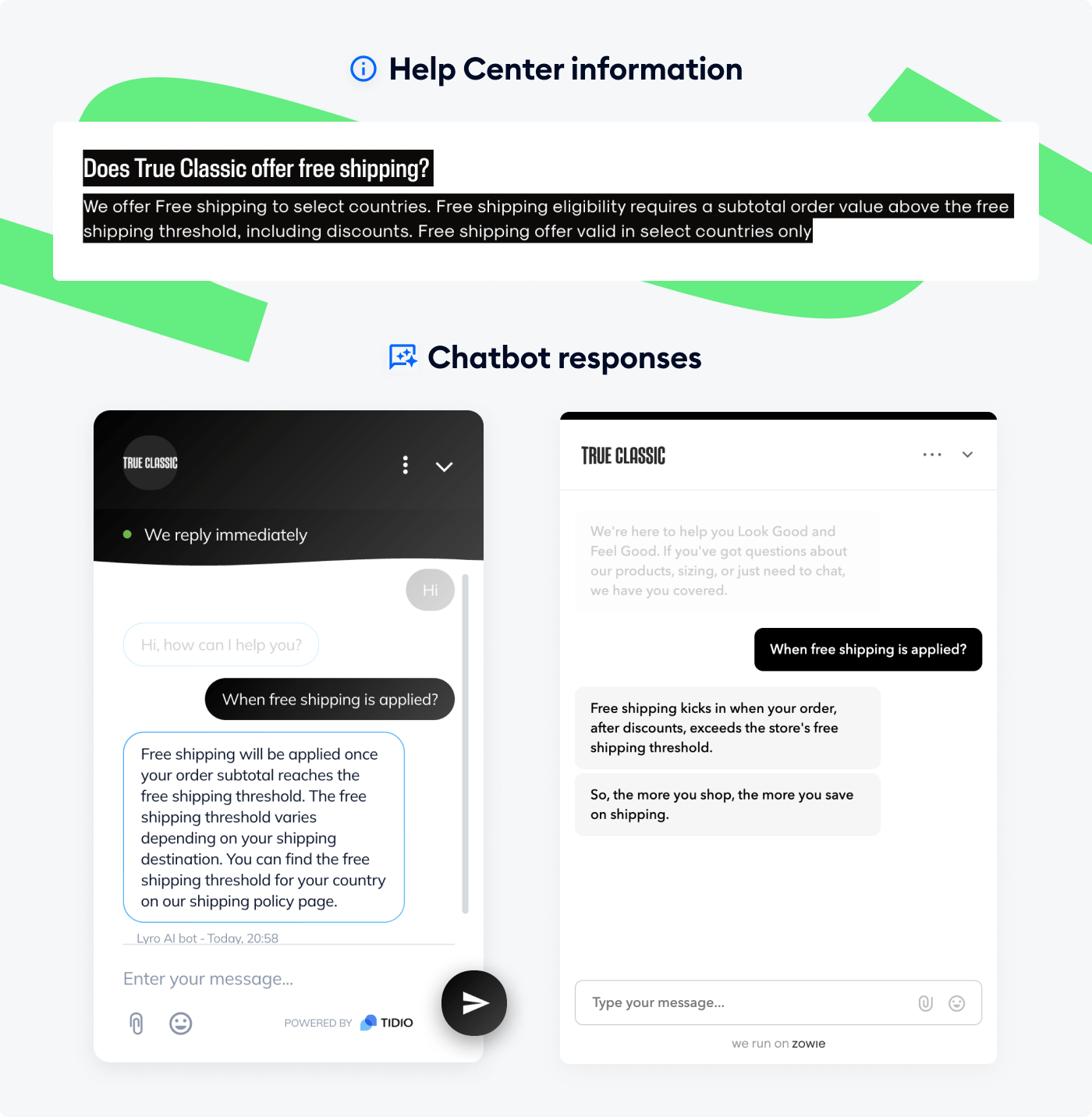
Results
Lyro ★★★★★
Zowie ★★★★★
Both answers were satisfactory. The systems stuck to the information from the FAQs and gave a full answer with all the necessary information.
Read more: Discover what FAQ chatbots are with benefits and different types.
Topic #5: Promo codes
Next, we asked the AI Are there any ongoing discounts for first-time customers? and checked the responses.
Here’s how they handled it:
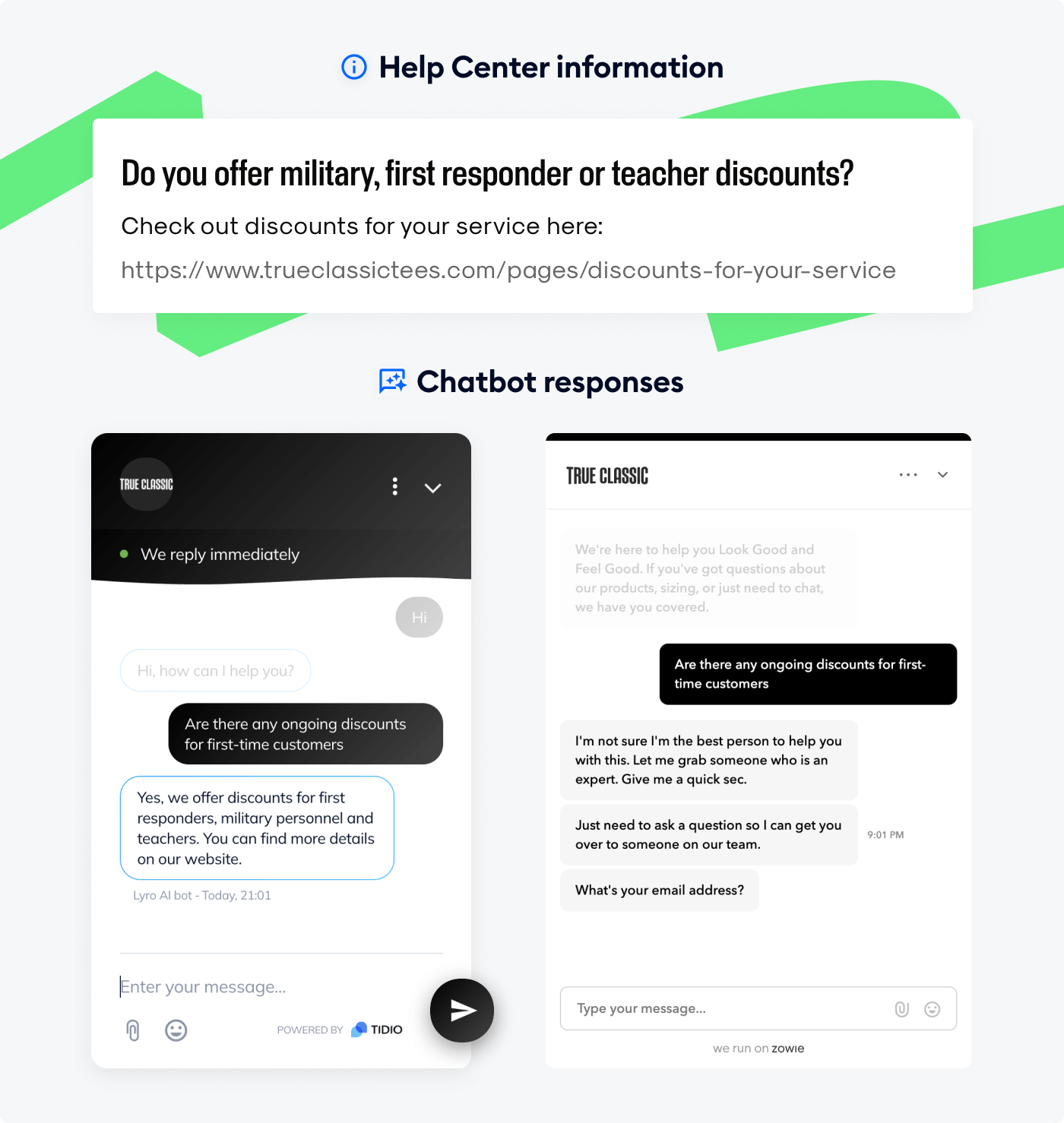
Results
Lyro ★★★★★
Zowie ★★☆☆☆
Lyro was able to answer the question and all the necessary information to the user. On the other hand, Zowie AI didn’t understand the question and defaulted to collecting the user’s contact details to send the query to one of the human agents to handle.
Topic #6: Promo codes not working
The next question that Lyro and Zowie AI were asked was My promo code is not working, can you help me?
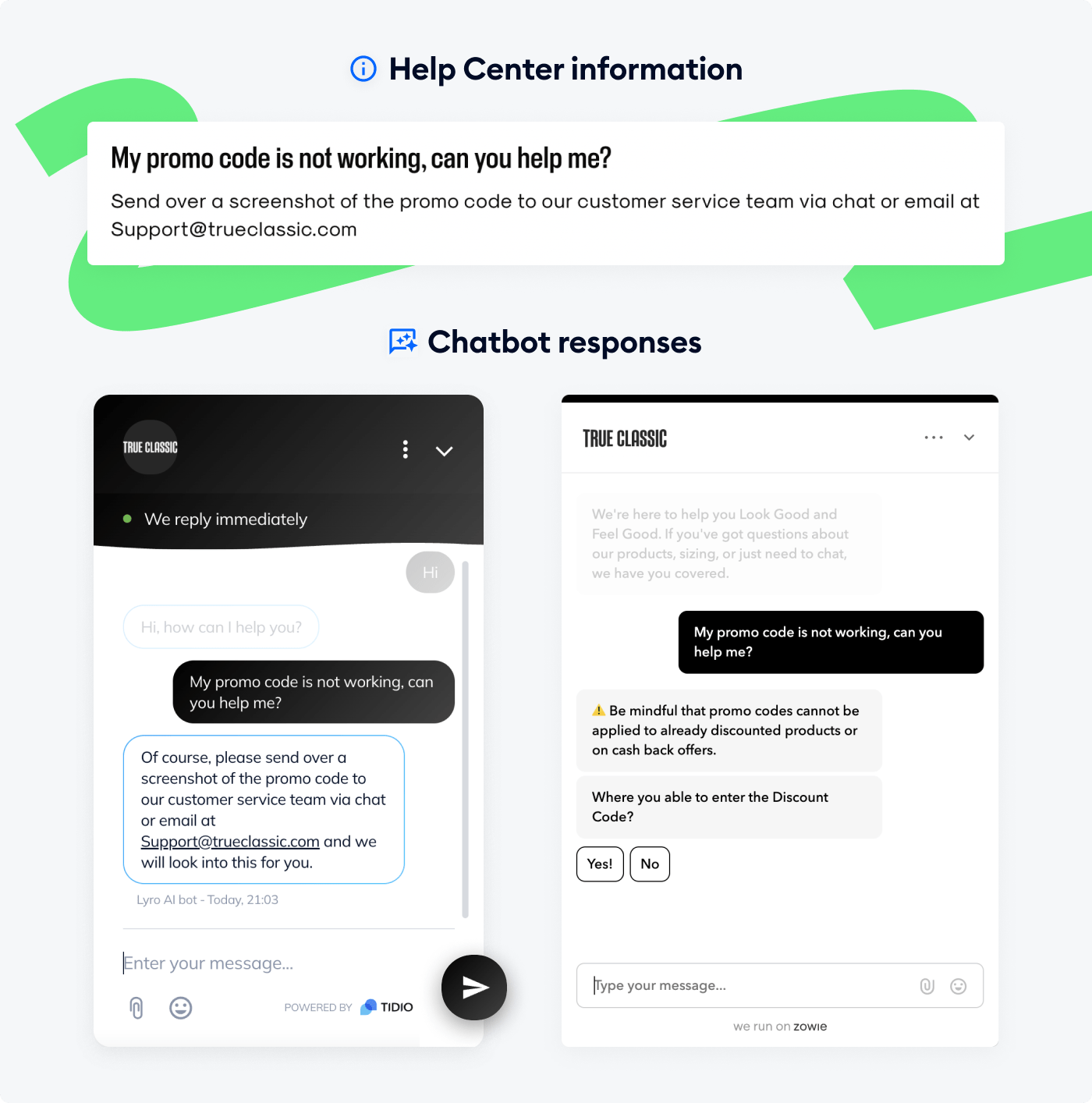
Results
Lyro ★★★★★
Zowie ★★☆☆☆
Lyro provided an answer based on available Help Center. Whereas Zowie AI seems to not fully understand the user’s problem. The software provides information related to the question but doesn’t fully resolve the issue.
Topic #7: Product sizing
We then gave a more shopping assistant question, Can you advise me about the size I should buy?, for the systems to answer.
Here’s how they handled it:
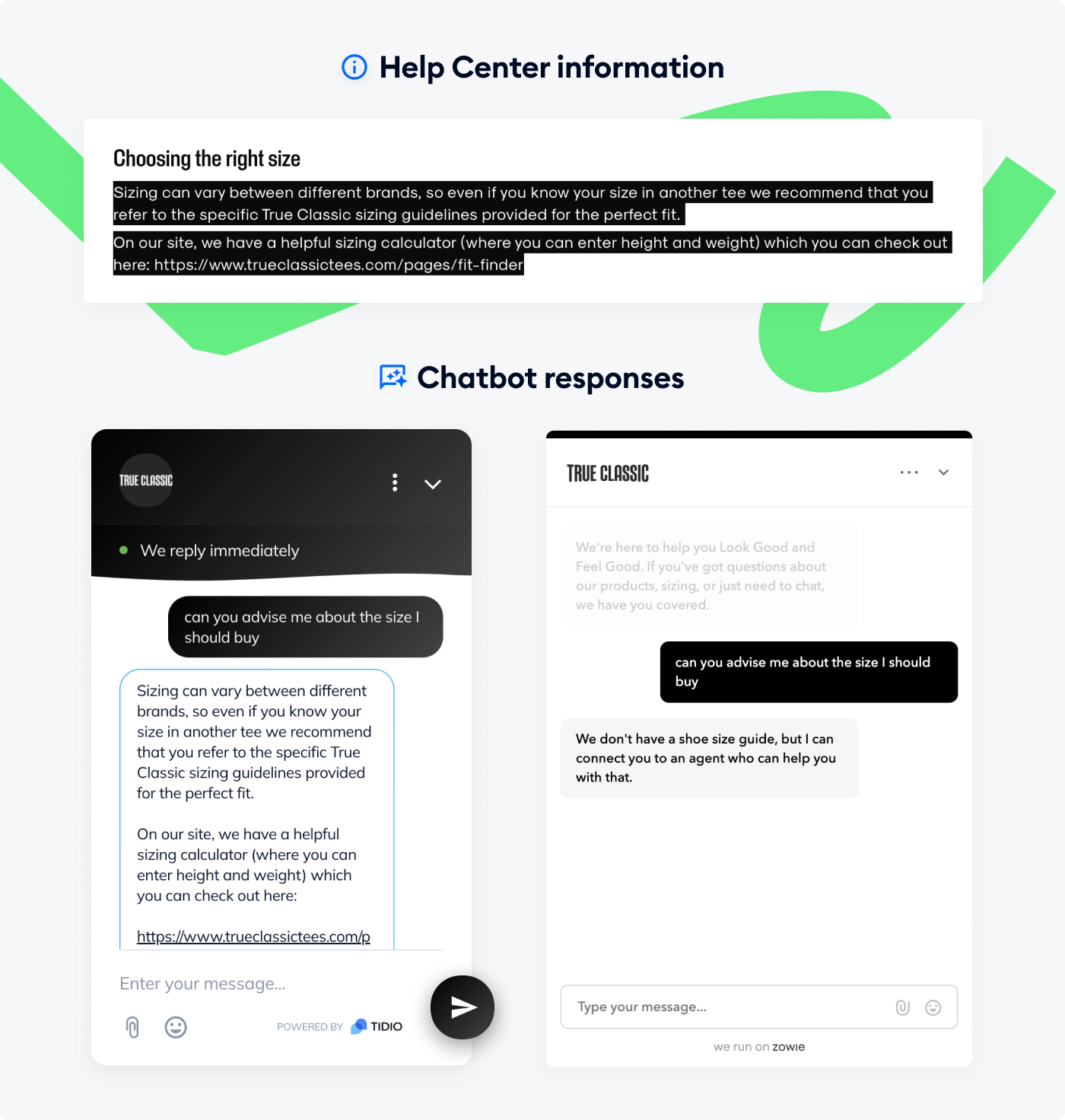
Results
Lyro ★★★★★
Zowie ★☆☆☆☆
Zowie chatbot gave out wrong information and then defaults to sending the user to the human agent. Lyro handled the scenario well by offering necessary information as well as giving a link to additional helpful resources.
Topic #8: Product questions
What about the questions relating product recommendations. Well, we asked Lyro and Zowie
Can you recommend a product for gift, that’s under $30?
Here’s how they handled it:
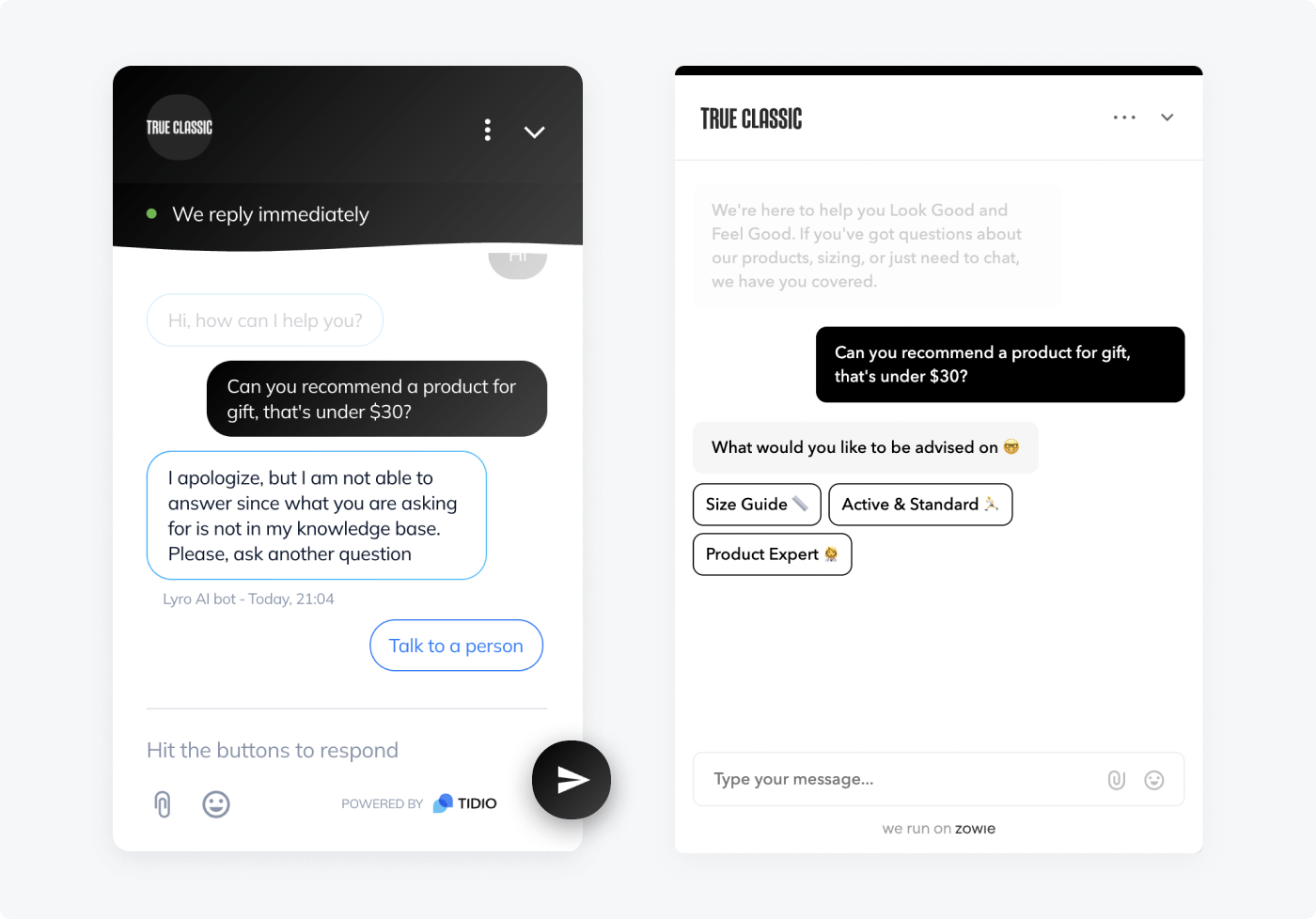
Results
Lyro ☆☆☆☆☆
Zowie ☆☆☆☆☆
Both chatbots failed to answer the question.
Topic #9: Order status
Last but not least, the systems received a question What is my order status?
Here’s how they handled it:
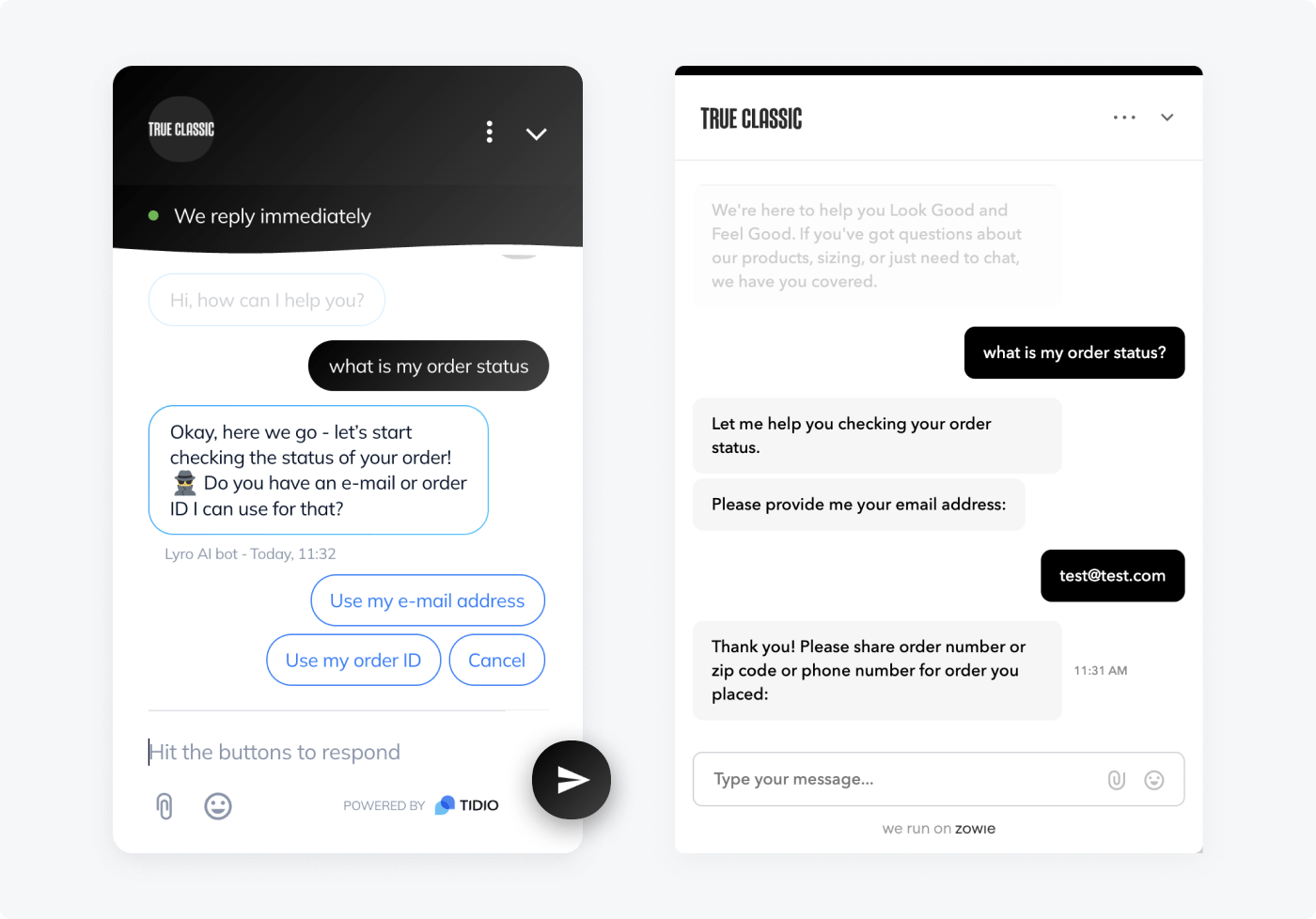
Results
Lyro ★★★★★
Zowie ★★★★★
Both chatbots have deeper integration with Shopify and both can check the order status.
Note: in the test case we didn’t place real orders to check the flow to the end.
Summary: AI battle Lyro vs Zowie
Tidio Lyro AI chatbot seems to be better at understanding the questions, especially when it comes to follow-ups and a more human-like conversation style.
Here’s a comparison table between the two software:
| Category | Lyro | Zowie |
|---|---|---|
| Returns | ✅ | ✅ |
| Product availability | ✅ | ❌ |
| Shipping | Question ✅ Follow-up ✅ | Question ✅ Follow-up ❌ |
| Free shipping | ✅ | ✅ |
| Promo codes | ✅ | ❌ |
| Promo codes not working | ✅ | ❌ |
| Product sizing | ✅ | ❌ |
| Product questions | ❌ | ❌ |
| Order status | ✅ | ✅ |
Lyro is the winner in this battle.
Take Lyro for a test drive
See you in the next round!

